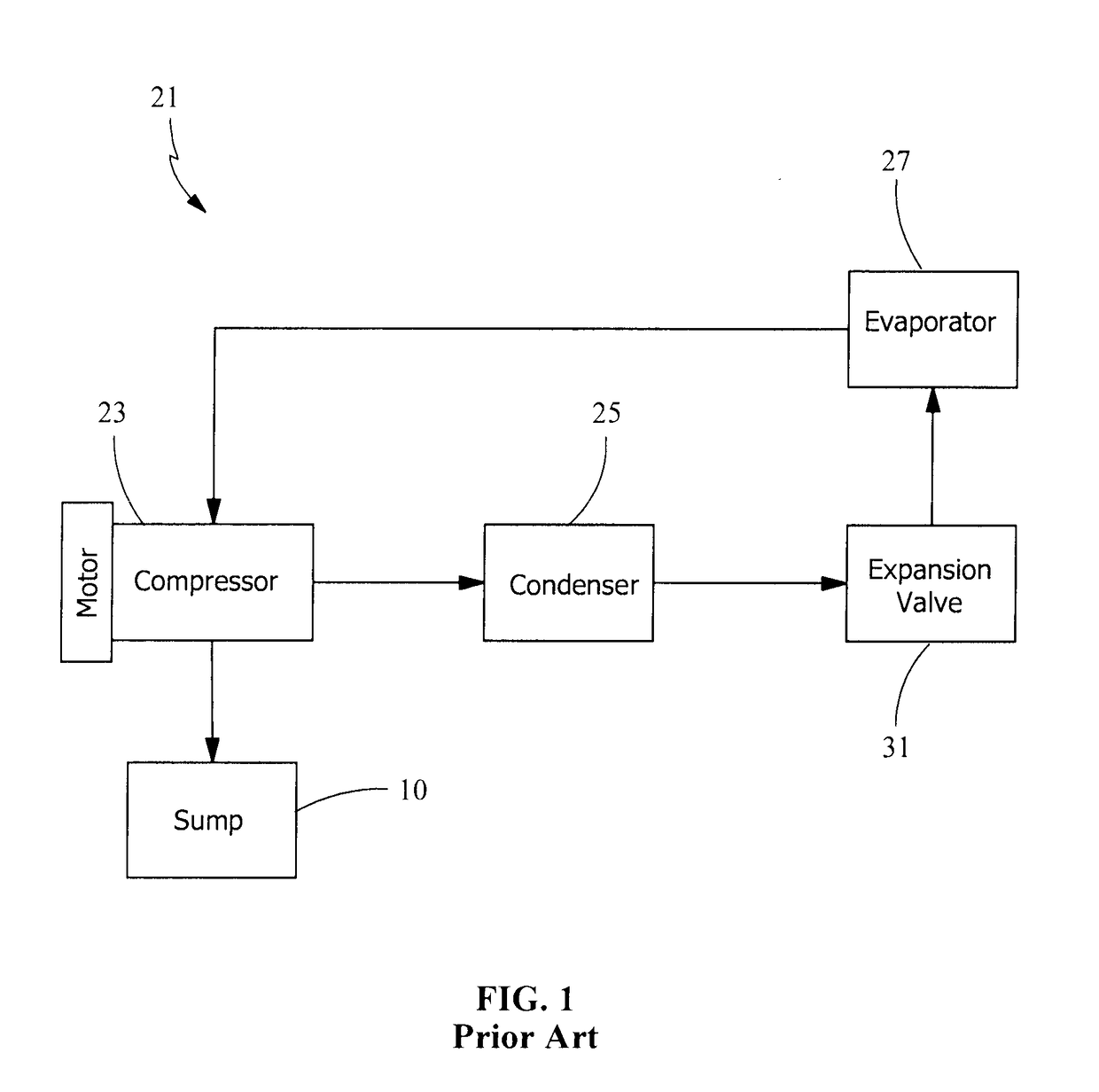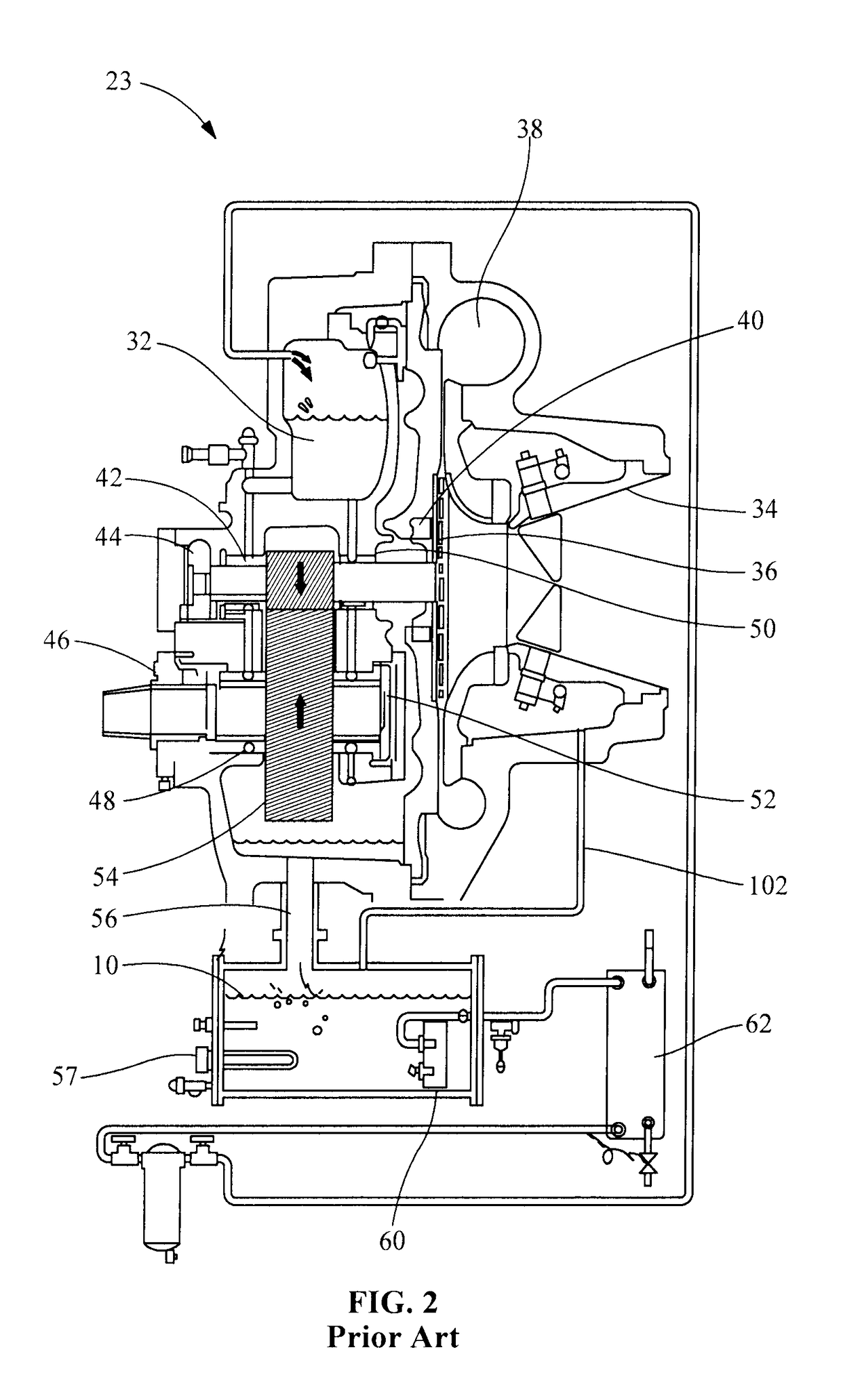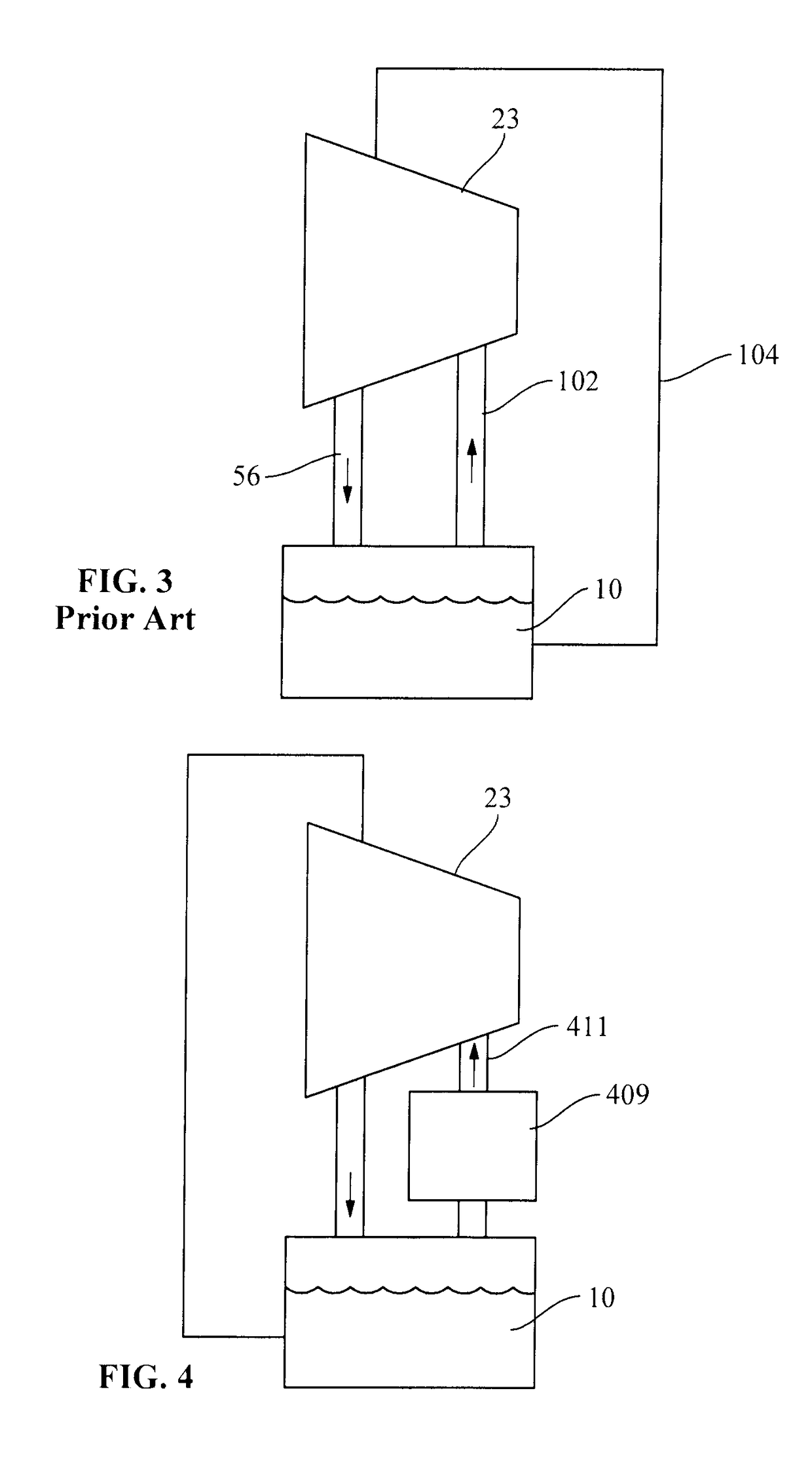Lubrication and cooling system
a technology of lubrication and cooling system, applied in the direction of machines/engines, liquid fuel engines, lighting and heating apparatus, etc., can solve the problems of reducing the lubricity of the oil, raising the temperature of the oil, and limiting the system when operating at higher evaporation, so as to reduce the pressure of the refrigerant gas
- Summary
- Abstract
- Description
- Claims
- Application Information
AI Technical Summary
Benefits of technology
Problems solved by technology
Method used
Image
Examples
Embodiment Construction
[0037]FIG. 1 is a schematic of a typical refrigeration system depicting a motor / compressor 23 in fluid communication with a condenser 25 which is in fluid communication with an evaporator 27. Refrigerant gas is compressed to a higher pressure in compressor 23. The high pressure refrigerant gas, after flowing to condenser 25 is condensed to a high pressure liquid via heat exchange, not shown. The high pressure refrigerant liquid is then sent to evaporator 27. An expansion valve 31 intermediate condenser 25 and evaporator 27 expands the high pressure refrigerant liquid to a mist, the mist being a mixture of gas and liquid at a lower temperature. In evaporator 27, the liquid refrigerant is evaporated, absorbing heat from a heat exchange fluid, as liquid refrigerant mist changes phase from liquid to gas. The cooled heat exchange fluid may be sent directly to a building environment or indirectly to an intermediate medium, such as a chiller for storage of chilled water until required. Ref...
PUM
 Login to View More
Login to View More Abstract
Description
Claims
Application Information
 Login to View More
Login to View More - R&D
- Intellectual Property
- Life Sciences
- Materials
- Tech Scout
- Unparalleled Data Quality
- Higher Quality Content
- 60% Fewer Hallucinations
Browse by: Latest US Patents, China's latest patents, Technical Efficacy Thesaurus, Application Domain, Technology Topic, Popular Technical Reports.
© 2025 PatSnap. All rights reserved.Legal|Privacy policy|Modern Slavery Act Transparency Statement|Sitemap|About US| Contact US: help@patsnap.com



